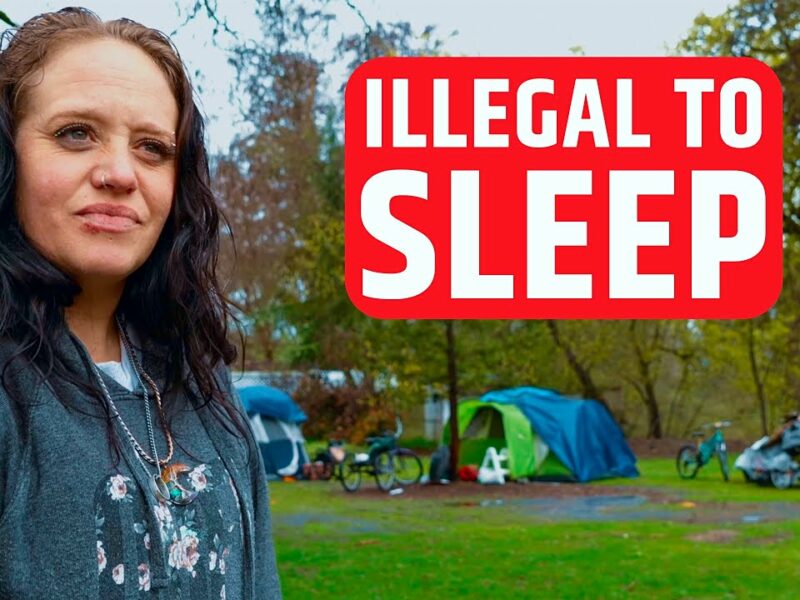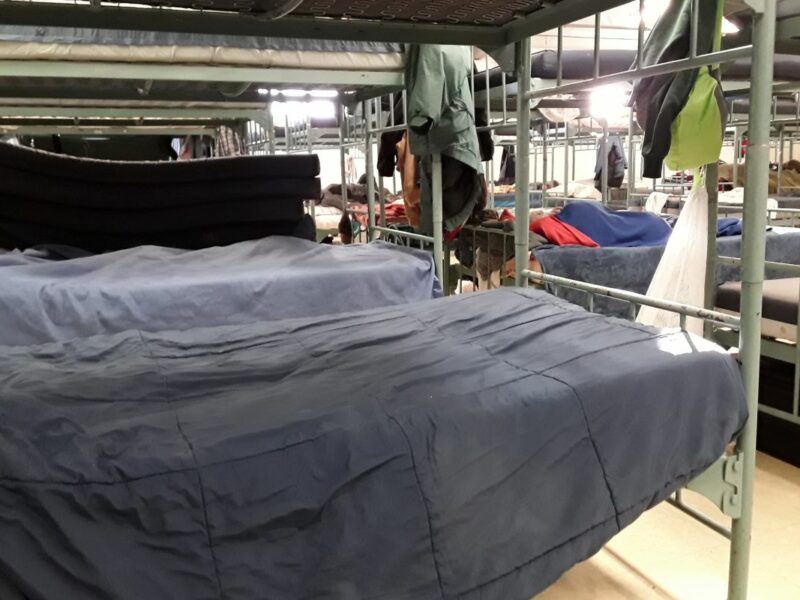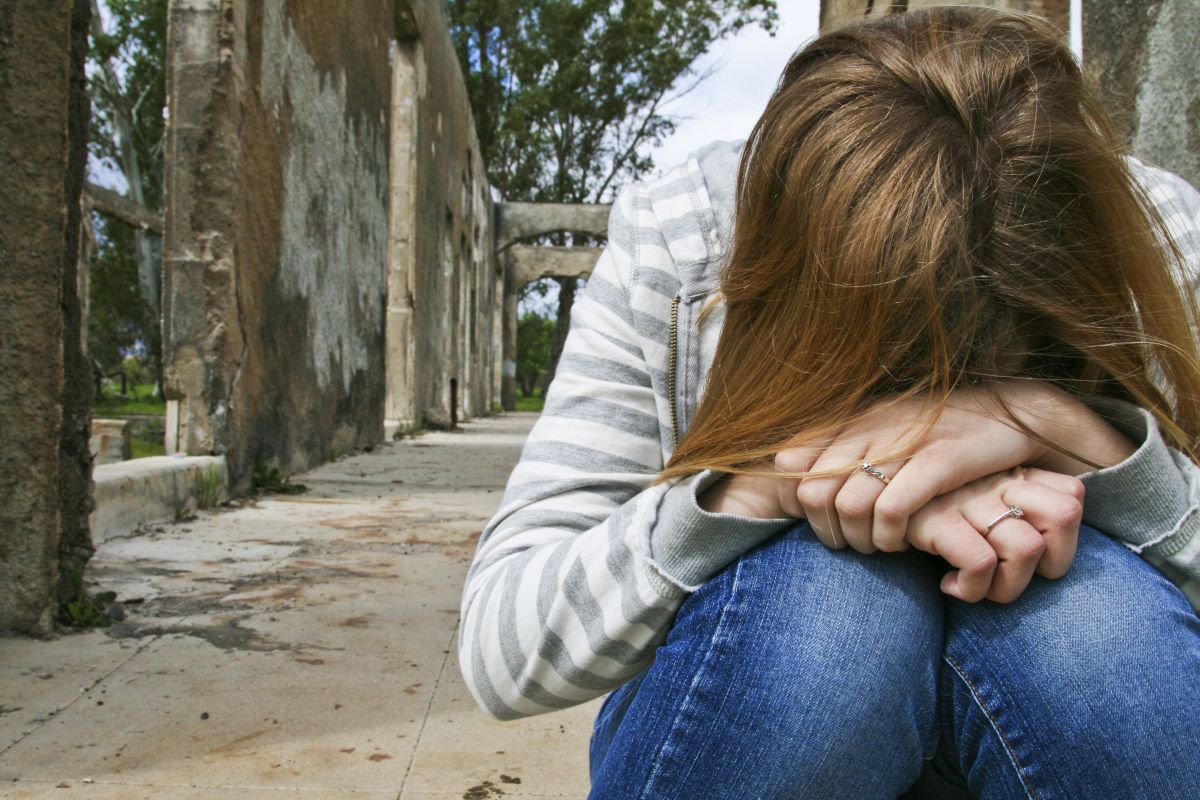There are many pathways into homelessness. One of those is prison. Another is the foster care system. Today, we’ll dig deep into the striking similarities between these two seemingly dissimilar institutions and expose how they put foster youth at an elevated risk of homelessness.
“I was aged out of foster care,” said 21-year-old Jacob, who opened up about being homeless in a heart-wrenching Invisible People interview. “You just age out. You turn 18, and the world just says okay, you’re an adult now. Go fend for yourself. I’ve been homeless ever since.”
As Jacob elaborated on the many things he’d never been taught while residing in the foster care system, his hardships became increasingly apparent.
People like Jacob, who have been failed by foster care, are statistically more likely to wind up in another government system – namely, the prison industrial complex.
While living on the streets of California, Jacob and others like him can be arrested for violating all of the following “quality-of-life” ordinances:
- Camping in public
- Loitering in public
- Panhandling
- Resting on a city sidewalk
- Storing personal belongings on the street and much more
A large portion of the estimated half million youths residing in the nation’s foster care system will fall into the foster care-to-prison pipeline, facing bouts of homelessness before, after, and in between stints of incarceration. Here’s why.
Fact: 25% of Former Foster Care Youths Become Homeless
Did you know that approximately 1 in 4 youths in the foster care system will be forced into homelessness within four years of aging out? In fact, a whopping 50% of homeless people today have spent some portion of their lives in the foster care system.
That is an astronomical number, much higher than the number of homeless people addicted to drugs or suffering from serious mental health conditions. Given the facts above, it is strange that being in foster care isn’t listed as a leading cause of homelessness.
Could this be because the foster care-to-prison pipeline runs too deep?
Fact: Homelessness Increases the Risk of Incarceration
Due to an overabundance of legislation that targets members of the unhoused community and not due to actual criminality, homeless people are now 11 times more likely to be arrested than their housed counterparts.
Imagine how many times you’d be in the back of a police car if you risked arrests and citations every time you slept, stood, walked around, or carried your personal belongings.
This is how the vicious cycle of homelessness functions. Aging out of foster care increases the risk of becoming homeless. Henceforth, becoming homeless increases the risk of incarceration.
Finally, as you might have guessed, being incarcerated drastically increases the risk of winding up on the streets, either again or for the first time. That circle is certainly full for a system with so many holes inside it.
Fact: 90% of Frequently Relocated Foster Children Wind Up in Juvenile Facilities
One study quoted by NBC News revealed that the overwhelming majority of foster kids who were relocated more than five times (90% to be precise) ended up in the juvenile justice system. Couple this with the fact that foster youths exhibit symptoms of PTSD at twice the rate of modern war veterans, and it’s easy to see that the war on children was right in our backyards the entire time.
All you have to do is connect the dots to draw a direct line from foster care to juvenile detention, from juvenile detention to homelessness, and then from homelessness to adult incarceration.
This would be a vicious cycle even if it stopped right here. Tragically, it does not. Instead, the pipeline keeps being fed more children.
Finally, Going to Prison Dramatically Increases the Likelihood of Becoming Homeless Tenfold, Bringing the Problem Full Circle in Real Time
People who cycle into the prison industrial complex cycle out into homelessness at unfathomable rates. Indeed, a formerly incarcerated individual is ten times more likely to wind up homeless than someone who has never been to jail.
Unlike other formerly incarcerated folks, however, former foster children are facing other unique obstacles that also give way to homelessness. Examples of this include:
- Never learning life-sustaining skills which sets them up for failure early on
- Abuse sustained at the hands of foster parents and authorities, which sows seeds of mistrust between foster children and authoritative figures
- Lacking family support, which, incidentally, is a leading cause of homelessness in another marginalized group – homeless war veterans
Urge Your Local Lawmakers to Protect Children from Homelessness and Institutionalization
Homelessness is not a lifestyle choice. Many people are born into it. Some of them lose their parents because of it. Some are born into it because they lost their parents due to death or other circumstances outside their control.
This is just one example of a multiple-system failure perpetuating a brutal cycle of homelessness. More must be done to protect foster children from falling prey to the foster care-to-prison pipeline.
Urge your lawmakers to take drastic measures to protect these vulnerable children from a lifetime of cycling through homeless shelters and prison cells.













